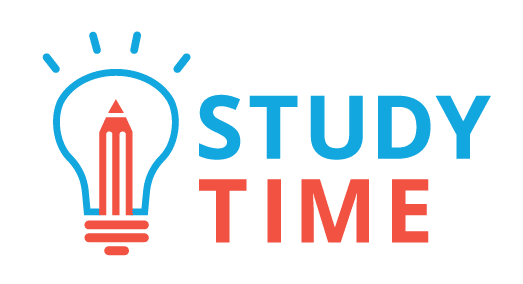Attempting past exam papers seems like a solid use of your study time when you can’t really think of anything else productive to do, but did you know that they’re actually an amazing tool for learning?
They allow you to practise the stuff you do know, identify the stuff you don’t, prepare for exam time pressures, understand the format of the questions, as well as build your confidence for the big exam day. Big list of big wins.
Practise papers are a no-brainer, but doing the bare minimum with them will not move mountains. We’ve got you though, below are our best tips and tricks for owning your practice exams, instead of letting them own you. Small changes in the way you study with practise exams can mean big bucks come end of year, no matter if you’re looking to scrape that A, or going for gold with your heart set on E24.
Finding Past NCEA Exams
Before we dive into different ways to study with your past exams, let us quickly recap (or enlighten you to) where you can find these on the internet:
The easiest way to access past papers is right here on StudyTime, which can be found on our exams page. We’ve curated and categorised past papers, assessment schedules, and exemplars so that they’re super easy to find. As of July 2021, we only have exam papers for 2018 and older, but we’ll be updating the page soon with the most recent exams available.
If you need to access the most recent papers, or we’re missing one of your subjects, past exam papers for all externals can be found on the NZQA website. All you need to know is the title or the standard number of the exam. You can also just type ‘exam title NCEA’ into google and the first link will usually be the right thing. You can also ask your teachers if they have any other ones stashed away that they can give you for more practice.
The page will look something like this.

To pull up the blank exams, use ‘Examination paper 2020’ and so on. These are the real papers that students in these years had in front of them in the exam room.
To find the answers (called Assessment Schedules) for each exam, scroll down to the bottom of the page to the section marked ‘Reports and Schedules’.

Marking sheets are set up horizontally with the answer in the ‘Evidence’ column, and criteria for A, M and E outlined in the relevant sections.

NOTE: some NCEA exams have had rejigs over the years so past exams may not 100% line up with what the exam contains this year. Just keep it in the back of your mind that the further back you go, the more differences you could encounter.
Practise under Exam Conditions
A nice and cliche start to this article but we promise we have some fresh new tips for you! Not only does practising in exam conditions help you get the most out of the learning, but it also makes you comfortable with the unnatural exam environment which will ease some nerves on the big day.

A doctor wouldn’t waltz up to their first day in a new hospital without having been to the place beforehand, regardless of how much medical knowledge they have. Going into an exam without exam conditions prep is the same idea.
Here are some tips on how to best approach studying in exam conditions:
- Revise beforehand
To get the most out of this, you need to be somewhat prepared for the questions. If you know nothing, you’ll leave the papers blank and waste 3 hours of your life for no good reason. You don’t need to be a pro but at least have an idea of each concept you could come across.
Use a checklist for each exam to make sure you have covered everything before you give it a go. Check out StudyTime for subject checklists on all the popular externals.
- Time pressure
Certain exams will have you sweating under their time pressure and no matter how well you know the content, you won’t get the marks if you don’t get it all written down. Getting comfortable under time pressure is best done in small increments.
E.g a hefty English essay. Have a go at writing your perfect essay under exam conditions minus the time pressure. Make note of how long this takes you and next time challenge yourself to do it in 15 minutes less. Bring this number down bit by bit until you can fit it within the hour frame. This will get you comfortable with how much time you can spend on brainstorming, proofreading and how comically fast your hand must write to get all the ideas down in time.

- Use real exam resources
Certain exams will come with a resource sheet with equations or key numbers. The more you practise with this exact resource, the easier it will be for you to navigate the exam. You will know how the 3 different exams are sectioned across it and where the most common equations are found. This seems like a little detail but if you waste time for every single question searching the resource, it will add up and could be the difference between finishing on time or not.
- Train the goldfish brain
If this is your first year sitting exams, 3 hours is a huge period to be deeply concentrated for in an exam. Your mind wanders to what you’re going to have for dinner, if your girlfriend has texted you back, and if that’s drizzle you see out the window because that means you’ll have to walk home in the rain after the exam.
The (goldfish) brain is a muscle that needs strengthening before making it sit for 3 hours doing something it loathes. Start small with your focus periods- one big question, half an hour, one full exam, then eventually work up to the three exam papers back to back. You will still get tired and bored, but you will get better and better at reigning in the goldfish to focus on the exam and not something else.

Understand what NCEA wants from you
If this is your first year sitting exams, it will pay to spend some time learning about NCEA exams, individual question marking and exam marking totals. It’s sometimes not as straightforward as knowing the right answer.

Know what you need to know
Teachers teach concepts with different scenarios in order for you to understand the concept better. Sometimes these specific examples are needed for the exam, other times it’s just the overall concept which you might need to apply to other examples in the exam. Understanding what you need to take away from classroom lessons is important so you don’t waste brainpower learning unnecessary information or wrongly convince yourself that ‘it won’t be in the exam’.
Figuring all this out could be done by asking your teacher for clarification, or taking a look at questions in past exam papers to see if the exact examples are talked about or not.
Model Answers
Certain questions are asked every single year, and the answer for them is the exact same. This is textbook stuff like definitions, why a concept can be applied in the given situation, why a concept cannot be applied, etc. A good way to ensure you secure these marks in the exam is learning model answers for the questions. Using the answer supplied by NCEA is a good shout for an ideal model answer you can learn.

Examples:
Statistics Level 3: Explaining ‘why a margin of error needs to be used’ is a question that comes up almost every year. Using the marking schedule you can find the supplied answer from NCEA. Remember it for the exam, slap it down when the question comes up, and watch the marks come rolling in.


Biology Level 2: This method also works in longer questions. Before starting your big answer, definitions are always asked for. Having a go-to for these means you’ll have marks secured even if you flop on the more complex bits. (Knowing the definitions can also be a hack to helping you fudge an answer for the rest of the question if you’re struggling- find a way to link your definition to the scenario given and you might just be correct.)


Attempt All Questions
It’s easy to skim through a practice paper and leave all the scary questions blank because you don’t want to look silly putting down the wrong answer. This is the easy option but won’t do you much good in the long run- sorry. Attempting all questions in your practice exams is beneficial for a number of reasons:
- You know more than you think you do. If we asked you to name the 50 states of America right now, a look of terror would probably spread across your face and you’d say that you can’t. You’d leave the question blank, close the exam paper and call it a day.
Now, think about if instead, you tried to list as many states as you could. Even if you had never studied the States of America, we guarantee you’d be able to name a few from buried memories of movies, books, current events quizzes and random conversations. You’ve got a few states down, you’ve picked up a few marks from giving it a go, and your exam result will be all the better for it.

- It’s a good exam habit. In the actual exam, you should be filling out every question even if you’re clutching at straws for the answer. Even a few keywords or a partially correct answer could get you more marks than you think. If you don’t practise being comfortable giving unsure answers in practise papers, you’ll find it a lot harder to do so in the actual exam.
- No pain, no gain. The more you struggle to answer a question, the better it will stick in your head. Don’t skimp on the hard stuff, it’s where you will gain the most benefit.

Mark your Answers Effectively
Our opening advice for marking your own answers is to be honest! It will be tough to give yourself an NA on a paper you put blood, sweat and tears into completing, but lying to yourself isn’t going to help anyone. Don’t tell yourself the answer is almost right or ‘nah yeah, that’s what I actually meant.’ Instead, take the L and admit defeat because your real marker won’t be so nice.

Cool, you’ve given yourself a pep talk, marked the paper harshly but honestly, and your grade stares back at you from the little box on the front page. Now that that’s ticked off your to-do list, go grab the Doritos and chuck on Netflix- or maybe not.
What you need to do after marking an exam is take a long, hard look into why some of your answers may have flopped. Here are some common reasons for missing out on marks and what to do to avoid it happening next time:
- If you didn’t know the concept at all
‘I’ve literally never heard this term before’, you mutter reading the answer to the question. No worries, things fall through the cracks all the time and uncovering gaps in your knowledge is the whole point of using practise exams! Start from scratch on that concept and do the learning, then work to understand how the question and answer link into it. When you come across it again, you’ll be able to identify it and hopefully not feel so lost.

- If you didn’t know what concept the question wanted you to apply
This issue can arise if you learn and practise each concept in isolation. You already know that you need to incorporate that equation/idea/concept into your answer, so your brain automatically works to find a way to do so. NCEA unfortunately doesn’t work like this as they don’t tell you what idea they are assessing in what question.
You can minimise this by:
- Mixing up your practice questions from different concepts altogether to keep your brain guessing.
- Doing exam papers in full and learning the style of question associated with each concept.
- Finding keywords in questions throughout past papers that relate to the same concept.
- If you got confused by the wording of the question
This is a tricky one to work to minimise because this can never be truly eradicated. Every year there is some media scandal about an NCEA question being so confusing that no one was able to decode it, and that’s how it always will be. Try to figure out what they were meaning by using the answer as clues, asking a mate or even a teacher. If they all agree it was a poorly written question, your best bet is moving on as it’s out of your control.

- If you made a silly mistake
Silly mistakes exist in heaps of shapes and sizes, like calculator typos, brain farts or misreading a word, and they happen for heaps of different reasons: distractions; rushing; stress. They can be one-offs or may pop up throughout your exam paper when you’re marking it, but the solution to them all is the same.
Slow down and double-check using methods like re-reading, highlighting, and recalculating. Silly mistakes are really the silliest of mistakes and rob you of hard-earned marks!

- If you thought you had nailed it but it was totally wrong
This one can sting a little harder than some of the rest but you’ve identified it and can now work to fix it. Identify exactly what tricked you into thinking it was this incorrect concept and why this was incorrect thinking, and work to reteach yourself the correct way.
Sometimes in situations like this, even after checking the correct working, it can still not be obvious why your way was wrong. Get some outside help from a friend or teacher who will be able to explain to you (nicely and constructively) why you aren’t on the right track. Don’t feel bad- this tunnel vision happens to all of us and we just need a different perspective to nudge us to see the bigger picture!
Create a Question Bank
Practise papers don’t have to be solely used front to back in silence at a stark empty desk. Using them in new ways will give you the best learning opportunity and save you from catching a mad case of boredom.
A great way to utilise practise exams is by splitting them off into individual questions and sorting these based on the concepts or skills they are testing. You can use these piles to better understand:
- How frequently certain concepts come up. This will help you prioritise your study based on how likely something is to come up.
- Common keywords used in questions for a concept. These can become your trigger words to help you identify when to apply that concept.
- Scenarios used every year. Work at understanding these so if they come up, you don’t waste unnecessary time wrapping your head around them.
- How well you know a concept. Work through the piles one by one, trying to answer the questions. This will quickly identify gaps in your knowledge and give you a clear direction in which to direct your study.

Space Out your Practise
Regardless of which of the above methods you choose to incorporate into your study, they won’t be much help if you start using them 24 hours before your exam. Studying with practice exams is best done spaced out in order to get the most out of the learning (this is scientifically proven- check it out in our Recognition versus Recall article).

Here is a suggested study plan:
- Have a go at a practice paper right after finishing the learning for that external, while it’s all fresh in your mind. It won’t be perfect and you’ll make some mistakes but the mistakes will show your weaknesses which will create the basis of your study plan. Direct your focus to these areas for your study.
- Now take a few practise exams and break them down to create a question bank for the exam. This will help you understand what sort of questions will be asked of you and in what formats. Take time to work through the questions with no time pressure and work to understand what NCEA wants in your answers.
- Keep hold of a few practice papers to use nearer to the time of your real exam. These should be done under exam conditions to test if you really are ready for your exam. Use the results of these to do some last-minute revision, and go smash that exam!
Good Luck
There you have it folks, our best intel from all our combined years of NCEA exam experience. Get your printer fired up and those practise exams rolling out for your best chance at success come November. The earlier you start practising with these strategies, the bigger the difference you have the potential to make. Good luck, you got this!


0 Comments